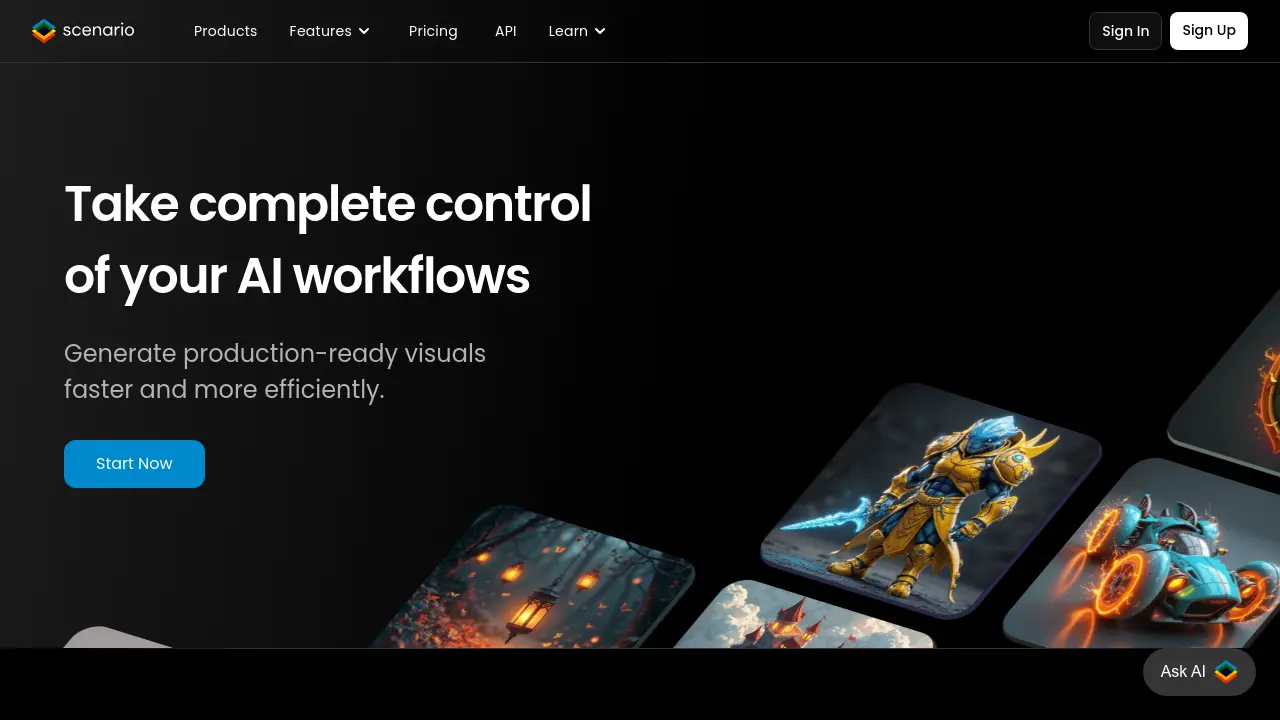Scenario
Generate production-ready visuals faster and more efficiently.

Description
Scenario empowers creative teams, particularly in game development, to accelerate their content production pipelines using AI. It allows users to train custom AI models based on their unique art styles, characters, and props, ensuring brand consistency across generated visuals. The platform provides tools for generating various assets like images, textures, and skyboxes.
Beyond generation, Scenario offers extensive control and editing capabilities, including ControlNet for composition, pixel-perfect inpainting, image enhancement, background removal, and upscaling. It facilitates seamless integration into existing workflows through its API, enabling deployment within design software, game engines, or even directly within games. Scenario prioritizes enterprise-grade security and data compliance to protect intellectual property.
Key Features
- Custom AI Model Training: Train unlimited models on your specific characters, props, backgrounds, and art styles.
- AI Asset Generation: Create images, textures, 360 skyboxes, and vectors aligned with your trained models.
- Advanced Image Editing: Utilize tools like Canvas, In-Painting, Enhance, Retouch, Restyle, Pixelate, and Background Removal.
- Composition Control (ControlNet): Precisely control the composition and elements within generated images.
- API Integration: Seamlessly integrate the AI engine into existing workflows, design software, and game engines (e.g., Unity).
- High-Resolution Upscaling: Enhance image resolution up to 16x.
- Workflow & Asset Management: Manage projects, tags, and collections within a dedicated workspace.
- Style Consistency: Maintain consistent art direction across all generated assets.
- Enterprise Security: Ensures data compliance and safeguarding of intellectual property.
Use Cases
- Accelerating game asset creation (characters, props, backgrounds).
- Maintaining consistent art styles across projects.
- Rapidly iterating on visual concepts and ideas.
- Creating marketing materials and branding assets.
- Enhancing existing images and removing backgrounds.
- Generating textures and skyboxes for virtual environments.
- Integrating AI generation into game engines or applications.
You Might Also Like
Onlypult
Free TrialYour social media helper
Social Hype AI
Free TrialCreate, Schedule, Edit, Rewrite, Simplify your Social Media Content with AI
ChatInsight.AI
Contact for PricingLet AI empower your business and enable smarter management
resumed.work
FreemiumWe give you the tools to optimize your next job search, and maximize your career success.
STAN AI
Contact for PricingAI Assistant for Property Management